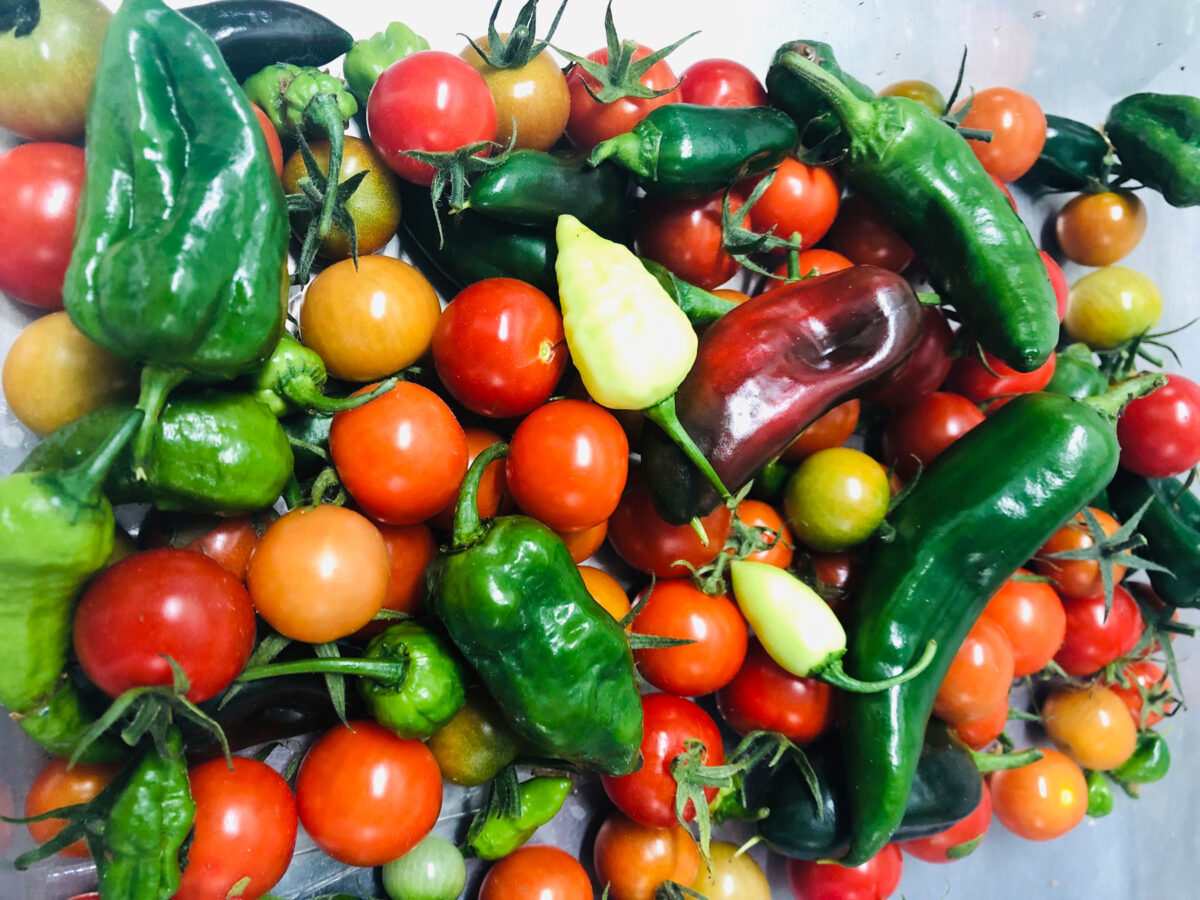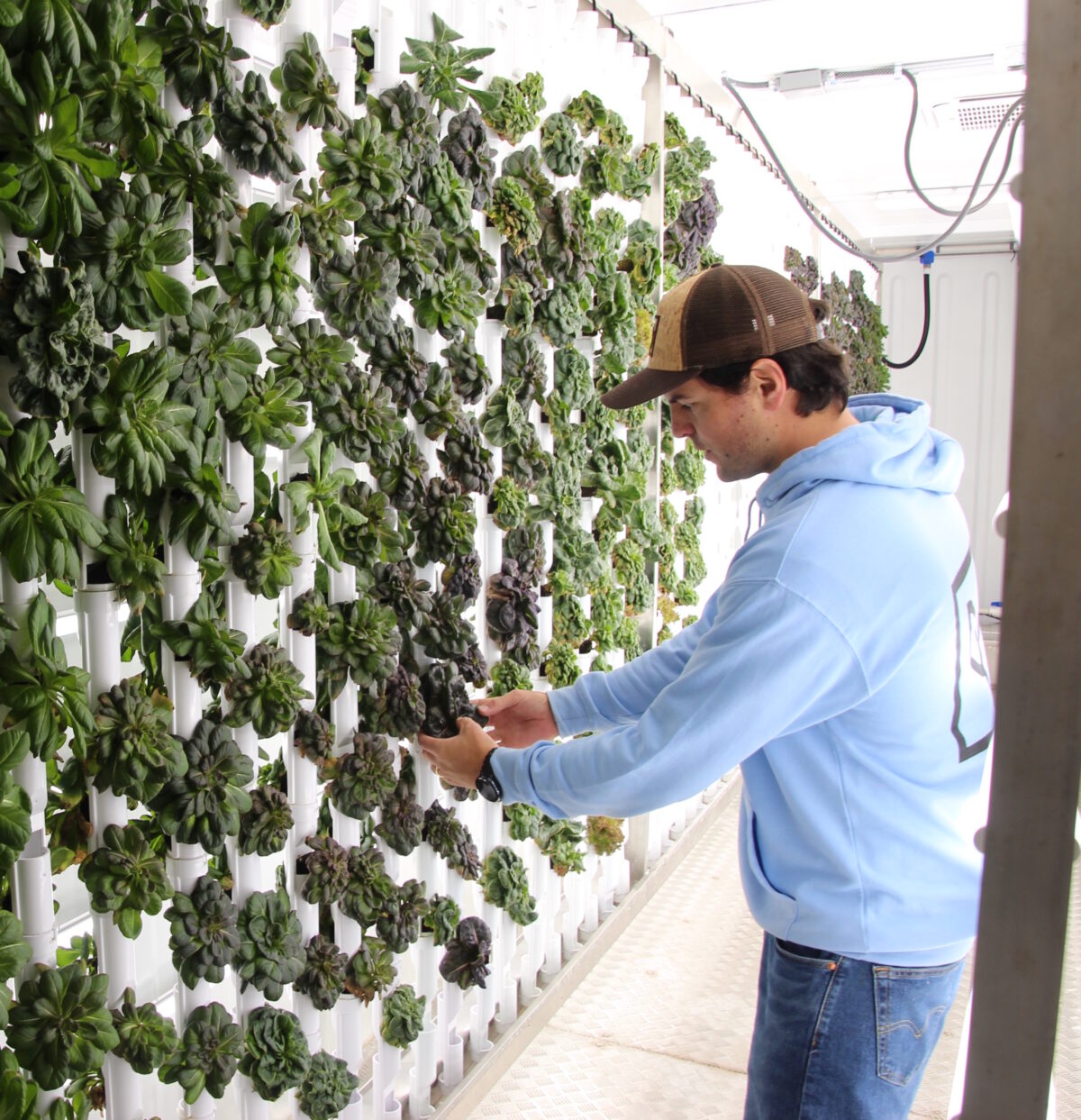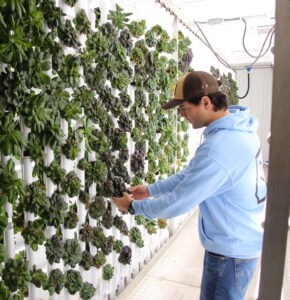Recent insights shared in this article by The Packer highlight a powerful and increasingly pronounced shift in food service strategies: consumers’ growing demand for health-conscious eating is driving major innovation in fresh produce sales. Industry experts say this shift is reshaping menus, sourcing and packaging, expanding access and opening doors for CEA technologies.
Article highlights:
- Health-forward menu items: Food service decision-makers are featuring produce in creative ways to satisfy consumers seeking nutrient-dense, plant‑based options.
- Produce innovation: From novel cuts to new varieties and packaging formats, freshness and convenience are key themes.
- Food service adapting: Chefs and operators are rethinking ingredient sourcing, menu flexibility and preparation efficiencies to meet evolving wellness expectations. Locally grown and locally purchased goods have gained more importance.

Harvested veggies
Linking Trends to Controlled‑Environment Agriculture (CEA)
CEA (the indoor growing of fruits, vegetables and herbs using technologies like container farms, greenhouses and hydroponics) fits nicely into many of these emerging food service trends.
- Consistent Supply of High‑Quality, Nutrient‑Dense Produce
CEA enables year‑round production of crisp, nutrient‑retaining greens and microgreens, perfect for health‑centric operators who want predictable quality and availability.
- Novel Varieties & Flavor Innovation
CEA allows experimentation with niche and specialty varieties (e.g. colorful lettuces, edible flowers, herb hybrids) that stand out on menus — exactly the kind of produce innovation operators are seeking.
- Traceability & Transparency
Foodservice customers increasingly value knowing where their produce comes from and how it’s grown. CEA offers strong control over environmental parameters, traceable growing records, and often lower pesticide use—aligning with clean‑label preferences.
- Local Proximity & Sustainability
Urban vertical farms and greenhouse operations close to metro centers reduce transportation times dramatically, delivering fresher product with a smaller carbon footprint. Operators can highlight “locally grown, indoor‑grown, and pesticide-free” produce as a differentiator.
- Packaging & Shelf‑Life Benefits
Plants grown in optimized indoor settings often require less handling and damage, enabling minimal packaging solutions. Freshness and extended shelf life translate to less waste for food service operators.
- Menu Innovation & Customization
With controlled environments, growers can produce micro‑batches of specialty herbs or leafy greens on demand. Chefs benefit from flexible supply and can experiment with new ingredients or shareable formats tailored to health‑oriented menus.
What This Means for Foodservice Operators
| Food Service Challenge | CEA Advantage |
| Unpredictable seasonal supply | Consistent year‑round production |
| Desire for unique, fresh items | Grow custom varieties and formats |
| Need for transparency and cleanliness | Controlled inputs, reduced chemical use |
| Consumer preference for local | Urban CEA provides nearby sourcing |
| High perishability & waste | Longer shelf life, less bruising |
By embracing CEA partnerships, food service brands can scale their innovation, deliver fresh, local, health‑optimized greens and produce, and respond nimbly to menu trends while enhancing supply chain reliability and sustainability.
Final Takeaway
The health-driven trends highlighted by The Packer signal a moment of transformation in produce strategy across foodservice. Operators eager to lead in the wellness and convenience space will find fertile ground in controlled-environment agriculture, leveraging its precision, consistency and foundations in sustainability to meet consumer demand for fresh, healthy and innovative produce.



